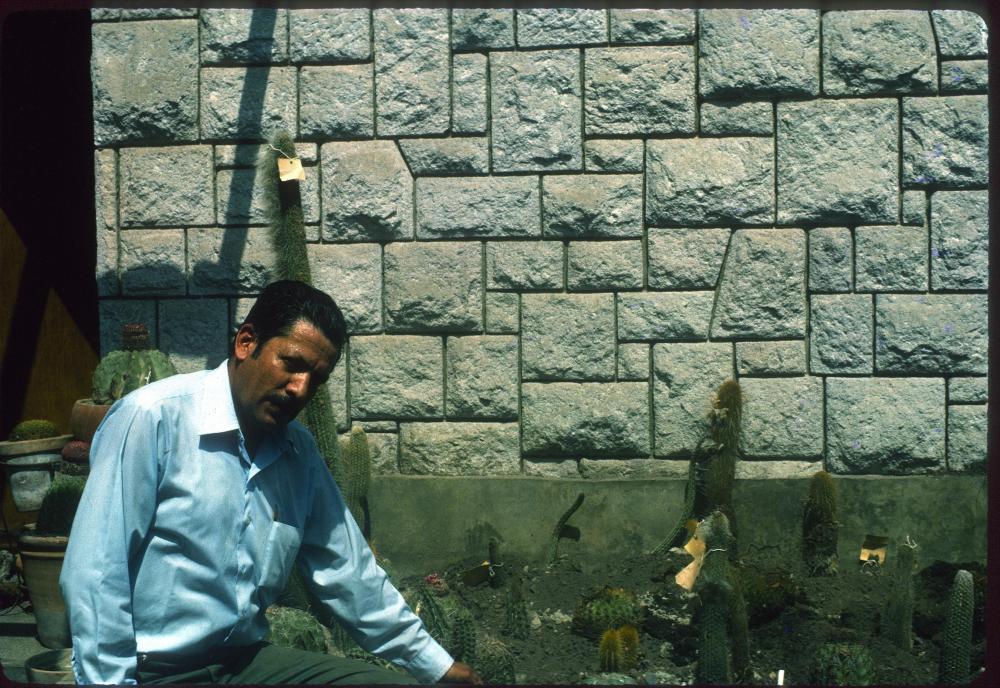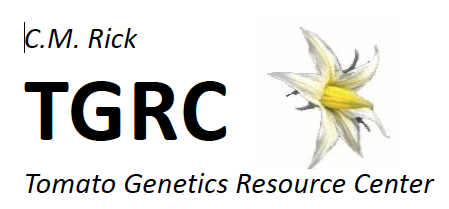The Crop Trust recently published a biography of the late Dr. Carlos Ochoa, a potato taxonomist and plant collector based at the International Potato Center (CIP) in Lima, Peru. Widely recognized as an authority on the wild potatoes, Ochoa also made many collections of wild tomatoes from Peru, and a few from Chile. He generously sent seed to Charley Rick at UC Davis for regeneration and distribution through the TGRC. Our website lists 46 accessions donated by Ochoa over a period of 30+ years (listed below). His collections include a few unique and noteworthy populations:
S. neorickii LA0247 from Chavinillo, Dept. Huanuco, Peru -- Our first accession of this species, which was unknown to science at the time. The early studies by T. Chmielewski and others referred to it informally as Lycopersicon minutum for its tiny flowers, a feature recognized by its first formal taxonomic description as L. parviflorum (Rick et al. 1976). Among it's noteworthy features, it bilaterally cross-compatible (i.e. as male or female parent) with cultivated tomato; in contrast, all other other tested accessions of S. neorickii -- and the vast majority of accessions of the other green-fruited species -- reject pollen of cultivated tomato in their pistils, a pattern known as unilateral incompatibility.
S. lycopersicoides LA2408 from above Putre, Arica and Parinacota region, Chile -- This population is one of the highest elevation collections made of any wild tomato relative, growing to over 10,000 ft elevation near Putre, Chile, where temperatures can get down to 0deg C or below, and thus could be a source of tolerance to low temperatures. LA2408 was among our first two accessions of this species from Chile, and the first accession to be successfully introgressed with cultivated tomato at the diploid level (Chetelat et al. 1989). Ochoa also collected LA2387 from the Lago Aricota area, Tacna, Peru, which has turned out to be the northern limit of the natural range of this rare species.
S. sitiens LA1974 from Chuquicamata, Antofagasta, Chile -- Our first established ex situ accession of this species, as an earlier collection (LA0469) made by Rick at the same site 22 years earlier was never successfully regenerated at Davis. This species is known for its ability to thrive in the Atacama desert under conditions of extreme aridity, soil salinity, and low temperatures. LA1974 was also the first S. sitiens accession to be hybridized with cultivated tomato, resulting in a partial set of breeding lines containing S. sitiens chromosome segments bred into the S. lycopersicum genome (Pertuze et al. 2003; Chetelat et al. 2018).
The tomato research community owes a debt of gratitude to Dr. Ochoa for his efforts to collect these and other unique wild tomato populations from their native habitat so that they can be preserved for future generations.
Listing of Ochoa wild tomato collections donated to the TGRC:
LA0247
LA0248
LA0249
LA0250
LA0251
LA0252
LA0253
LA0254
LA0255
LA1708
LA1725
LA1727
LA1736
LA1737
LA1738
LA1974
LA1975
LA1991
LA1992
LA2067
LA2068
LA2385
LA2386
LA2387
LA2388
LA2403
LA2404
LA2405
LA2406
LA2407
LA2408
LA2409
LA2410
LA2411
LA2417
LA2421
LA2533
LA2808
LA2809
LA2810
LA2811
LA2812
LA2813
LA2814
LA2815
LA4019
Ochoa was also interested in the native species of Cactaceae from Peru.

Chetelat, R.T., C.M. Rick and J.W. DeVerna. (1989) Isozyme analysis, chromosome pairing, and fertility of Lycopersicon esculentum x Solanum lycopersicoides diploid backcross hybrids. Genome 32:783-790.
Chetelat, R. T., X. Qin, M. Tan, D. Burkart-Waco, Y. Moritama, X. Huo, T. Wills and R. Pertuze (2019) Introgression lines of Solanum sitiens, a wild nightshade of the Atacama Desert, in the genome of cultivated tomato. The Plant Journal 100: 836-850
Pertuze, R. A., Y. Ji, and R.T. Chetelat (2003) Transmission and recombination of homeologous S. sitiens chromosomes in tomato. Theor. Appl. Genet. 107: 1391-1401.
Rick, C.M., E. Kesicki, J.F. Fobes and M. Holle (1976) Genetic and biosystematic studies on two new sibling species of Lycopersicon from interandean Peru. Theor. Appl. Genet. 47:55-68.

